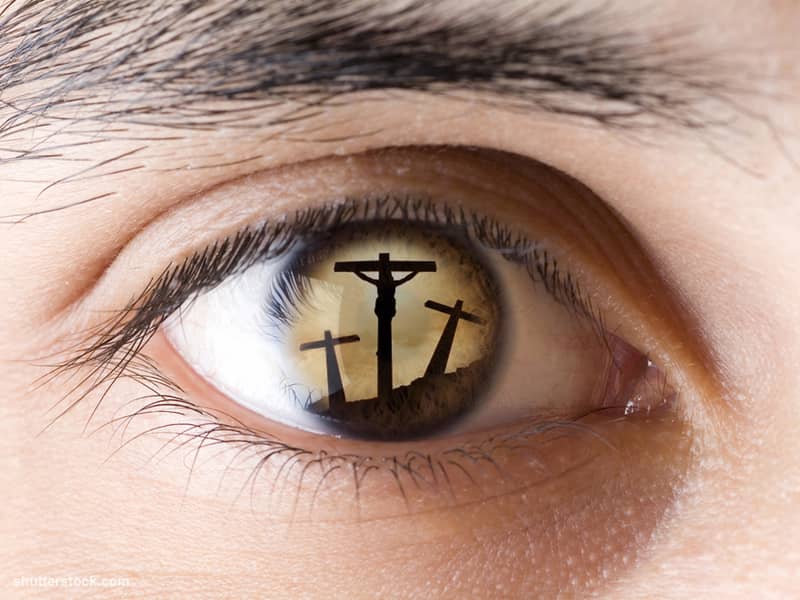For many young Christians, the trek toward Christian orthodoxy-and, in some cases, the attraction to its most historical churches-boils down to an encounter with God that defies description. Churches that preach the hard gospel or cling to time-tested teachings may capture the attention of seekers. But often it is the quality of a church's worship experience-and the degree to which it offers mystery and meaning-that makes them stay.
Few worship experiences match the mystery of eucharistic adoration, the traditional Catholic practice of reverencing the consecrated communion wafer that Catholics believe contains the body, blood, soul, and divinity of Jesus Christ. Catholics reared in the days before Vatican II remember devotion to the Eucharist as an integral part of the faith. But for those born after the landmark council-which collided with the social upheaval of the 1960s to trigger drastic changes in the way American Catholics approached worship, religious life, and catechesis-eucharistic adoration is another traditional devotion that few of them experienced as children. For that reason, and because of the intense spiritual experiences that young adults say they have had as a result of such adoration, the practice has sparked curiosity among many post-Vatican II Catholics, who are promoting it in their parishes and on their college campuses.
At St. Louis University in 2000, Jesuits-in-training Phil Hurley and Christopher Collins, acting independently, introduced eucharistic adoration to students at the Jesuit campus. Collins spearheaded a traditional Friday afternoon service for students that featured long periods of silence, Latin hymns, incense, and solemn Benediction by a priest. Hurley modeled a Monday night Holy Hour after the charismatic adoration services he had experienced at Franciscan University of Steubenville, which blended the traditional devotion with contemporary praise songs, including many evangelical favorites.
Both Holy Hour services soon began attracting regular devotees. The evangelical adoration service on Monday nights drew so many students that the group had to move to a larger meeting space to accommodate the crowd. The campus ministry, which was known for its emphasis on social action, eventually took over organization of the Monday night assembly.
"It's amazingly personal," Hurley said, pulling his hands toward his heart as he recalled his first adoration experience in Steubenville, where hundreds of young Catholics sang praise songs, then knelt in reverence as a priest passed by them holding the monstrance that contained the Eucharist. "It was exactly what I needed."
Hurley and Collins know that many older Catholics associate eucharistic adoration with a rigid imposed piety that they happily discarded after Vatican II. For younger Catholics, though, adoration is unknown-and therefore, exotic and appealing.
"They don't have the baggage," Hurley said, referring to the hundred-plus college students who now flock to the adoration service. Instead, Hurley said, these Catholic young adults experience adoration as he first did: as a mystical encounter with Jesus that solidifies their identity as Catholics.
The phenomenon of eucharistic adoration among the young has spread to campuses across the country. From Harvard University and MIT in Cambridge to Thomas Aquinas College in Santa Paula, California, students in groups large and small have embraced eucharistic spirituality as a way to find serenity and connect with God.
"It's just so peaceful," said Danielle Rose Skorich, a student at the University of Notre Dame who regularly attends student-organized eucharistic adoration at a campus chapel. Adoration's appeal among her peers is part of a larger openness to tradition, Skorich said: "You tend to see traditions as not big enough to hold your idea of faith for modern times. But this stuff was there before-so it is big enough, rich enough."
"If your heart is really in it, if you're just trying to respond in love, the grace just kind of jumps out at you," said Skorich, a bubbly woman with a dazzling smile, a nose ring, and straight brown hair that cascades down her back. "I feel a whole different level of trust in my relationship with God. I see a whole different beauty in the church. I'm just filled with joy in a whole different way."
Skorich said her favorite part of Mass in Notre Dame's Basilica of the Sacred Heart is when the priest holds up the round, white host and says, "This is the Lamb of God, who takes away the sins of the world. Happy are those who are called to his supper." After the congregation answers with the words that mimic those of the centurion in Matthew's Gospel-"Lord, I am not worthy to receive you, but only say the word and I shall be healed"-the priest breaks the host.
"You hear [the breaking of the host] echo in the church," Skorich said. "Then we say, 'We're not worthy to receive you.' Then we go up there and receive it. I feel like we're called to be broken like that: called to love the world as Christ does, in a way that breaks our hearts, in a way that hurts. I feel like it all means something."
After Skorich receives communion, she hears the words "body of Christ" repeated to each subsequent communicant, like a mantra reminding her of Christ's sacrificial love.
"Sometimes I just get so overwhelmed that I have to start crying," Skorich said, her brown eyes shining. "He just gives and gives and gives, over and over. If you begin to contemplate what you're being given, how do you respond to that?"

